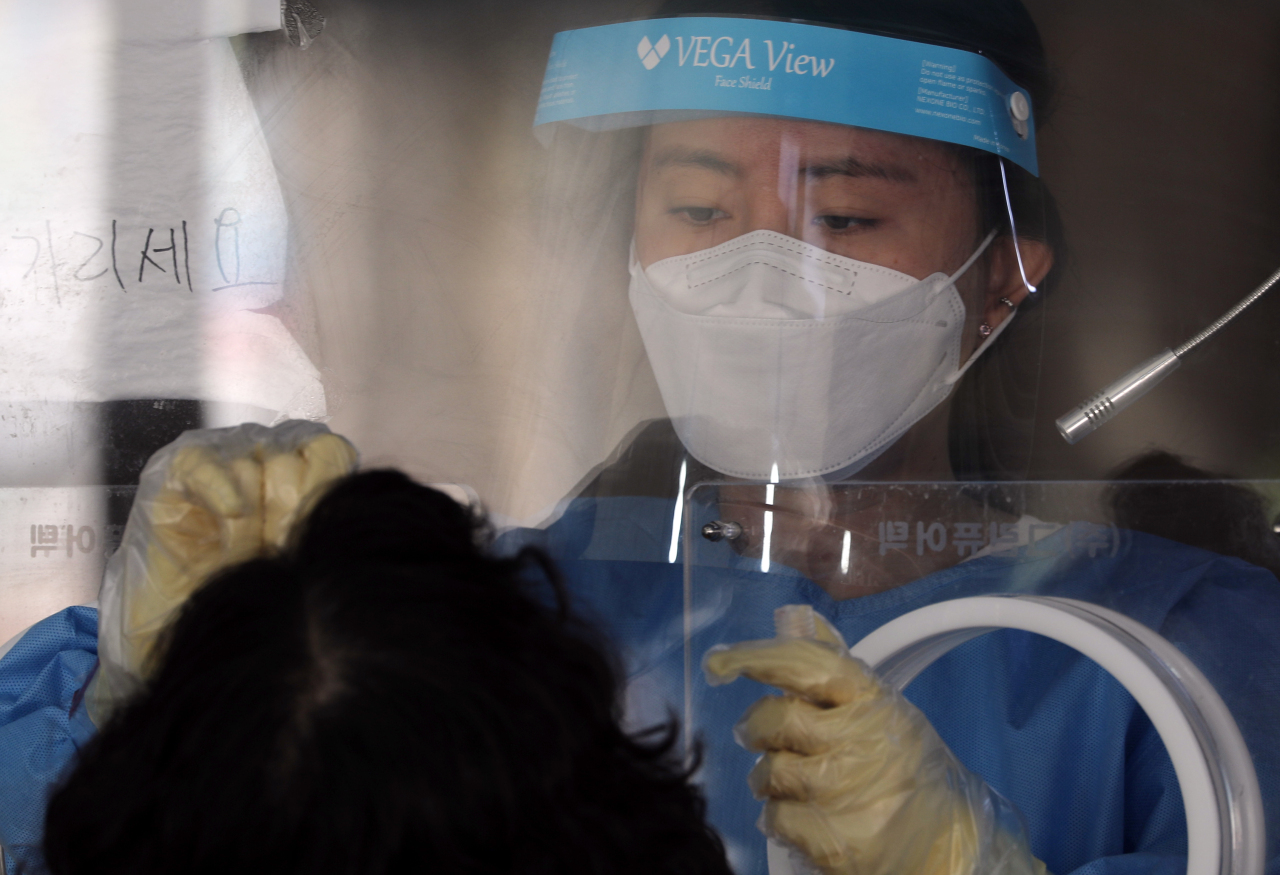The Korean government’s promise of a maskless Chuseok holiday next month is looking increasingly less likely, health experts say, with cases once again rising to record levels on Thursday.
In the last 24 hours ending Wednesday midnight, Korea counted 2,152 more cases of COVID-19, up from the previous day’s 1,805, marking the second-highest one-day record behind Aug. 11’s 2,222. Over the past month, an average of 1,652 cases was posted each day.
Son Young-rae, spokesperson for the Ministry of Health and Welfare, said during a closed-door briefing Thursday that “cases usually drop over the weekend when fewer tests take place and climb back again on Wednesdays,” explaining the jump to over 2,000 cases seen on the day.
He said the current surge was “not as deadly as the last wave” that spanned about a month and a half from December as vaccinations progress. “During the first week of January, when daily infections numbered between 800 and 1,000, some 150 patients had died. Last week, despite caseloads being significantly larger, 32 patients had died,” he said.
“Cases are plateauing after spiking three or four weeks ago, and the slow in spread is attributable to vaccinations and intensive social distancing,” he said. “Korea is adopting a ‘two track’ strategy -- speedy vaccinations accompanied by massive testing and contact tracing.”
He added the government’s COVID-19 response task force was due to announce on Friday whether to extend the strictest tier of social distancing measures that have been in place for more than a month. Under the tier, private gatherings of more than two people are banned after 6 p.m.
He hinted that Friday’s announcement may include post-vaccination incentives. “Some exemptions from rules are being mulled for people who are vaccinated,” he said.
As of Wednesday evening, across the country, 74 percent of COVID-19 beds at hospitals and 59 percent of beds at “community treatment centers” -- non-hospital facilities for quarantining patients with mild symptoms at the time of diagnosis -- had been filled.
Dr. Eom Joong-sik, an infectious disease specialist at a designated COVID-19 hospital in Incheon, said after a 58-year-old woman died last week at a community treatment center while waiting to be transferred to a hospital, centers are filing more requests for patient transfers to hospitals.
“Hospitals, quarantine centers are swamped,” he said. “If cases continue at this rate, having patients stay at home might be inevitable.”
He said now he was seeing more patients in their 50s at the intensive care ward, adding this trend was not unique to his hospital. “Out of 13 people who died yesterday nationwide, four of them were in their 50s,” he said.
August vaccination efforts are primarily focused on delivering first doses to people in their 50s. The fully vaccinated rate in the age cohort of 50-somethings stands at 11 percent, lower than that of 30-somethings, 20 percent of whom are fully vaccinated, or that of 20-somethings, which is 15 percent.
As for prospects of a less socially distanced September, when Chuseok comes around, Eom said he didn’t think it was very likely.
“Roughly 80 percent of Koreans aren’t fully vaccinated, and to protect against delta, receiving both doses is absolutely necessary. And we don’t know if another variant will pop up by then,” Eom said. According to ministry data as of Monday, delta variant infections accounted for about 90 percent of analyzed cases in Korea.
“Korea needs to either speed up vaccinations or tighten restrictions. The social distancing measures that are in place right now aren’t effective enough to rein in the spread.”
Dr. Jung Ki-suck, a former director of the Korea Centers for Disease Control and Prevention, also pointed out that the string of outbreaks at adult entertainment facilities up until July were “responsible for the surge we are seeing right now.”
Jung said unlike during the winter surge, places with higher risks of contagion such as karaoke bars were still allowed to stay open.
“If we look at the transmission patterns, entertainment businesses have been driving the community outbreaks for some time,” he said. “Outbreaks at such facilities are harder to contact-trace because they are often run covertly. Contact tracing is failing in more than 30 percent of newly confirmed cases.”
Infectious disease professor Dr. Kim Woo-joo of Korea University agreed Koreans were facing a social distancing filled autumn.
“Fall is approaching, when respiratory viruses typically circulate, and September is also when most people under 50 years of age are due their first doses, which makes it a bad time to drop restrictions,” he said.
So far in the month of August, 228,908 vaccine doses have been administered per day on average, much higher than the July’s daily average of 90,335. But this still falls far short of the government’s touted capacity of 1 million vaccinations a day.
Some 47 percent of Korea’s 51 million people have received at least one dose of a vaccine so far, and 20 percent have been fully vaccinated. The goal is to fully vaccinate more than 70 percent of the population by October.
By Kim Arin (
arin@heraldcorp.com)








